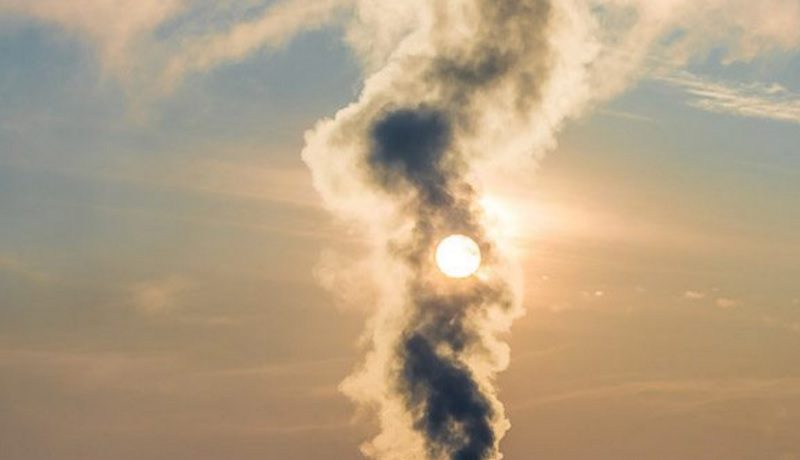Air Quality Guidelines. The World Health Organisation (WHO) has published an update to its Global Air Quality Guidelines (AQGs), which provide thresholds and limits for key pollutants that pose a risk to health.
The European Environmental Bureau (EEB) welcomes the new guidelines, that are meant to help protect human health, the environment and climate from dangerous air pollutants.
They offer guidance for legislation and policies to curb air pollution and decrease the burden of disease resulting from exposure to toxic air worldwide. The key pollutants covered by the guidelines are particulate matter (PM2.5 and PM10), ozone (O3), nitrogen dioxide (NO2), sulphur dioxide (SO2) and carbon monoxide (CO).
This is the first time that the guidelines have been updated since 2005. The scientific understanding on the short- and long-term harmful impacts of air pollution on human health has developed significantly in this time.
Emilia Samuelsson, EEB Policy Officer for Air Quality and Noise, said: “The new air quality guidelines by the WHO are a wakeup call: it is time to tighten EU air quality standards and extend them to cover more pollutants. Air pollution harm us all, and reducing harmful emissions from all sectors should be a priority across EU policies – or citizens will end up footing the bill with their own health”.
In 2016, 91% of the global population lived in areas where the guideline thresholds were exceeded. A recent analysis by the Centre for Research on Energy and Clean Air (CREA) found that even if the previous thresholds had been met, air pollution would still be responsible for around 5.5 million deaths every year.
Stricter levels for NO2 and particulate matter air pollution are particularly welcomed, as severe health risks are associated with these pollutants. Exposure to NO2 is associated with cardiovascular and respiratory diseases, and the pollutant also contributes to the formation of ozone and particulate matter. Particulate matter affects people more than any other pollutant and is associated with cardiovascular and respiratory diseases and adverse birth outcomes and impacts to nervous system development in children.
Samuelsson said: “Clean air is a fundamental human right: there are no safe levels of air pollution. We demand that the revised EU Ambient Air Quality Directives (AAQDs) at the bare minimum align to the new guidelines and reflect the latest scientific evidence on the health and environmental impacts of air pollution, to ensure that people’s right to clean air is respected”.
The updated WHO guidelines do not include recommendations regarding multiple exposures to air pollutants at the same time, which is the reality for people in everyday life. There is a need to develop comprehensive models to quantify the effects of these instances of multiple human health.
The EEB also calls upon the EU and national governments to support the adoption of new laws to tackle sources of air pollution, especially in sectors lagging behind, such as agriculture, domestic heating and transport, including shipping.
A new study from the EEB and Green Transition Denmark reveals that domestic heating with wood and coal in small private stoves and boilers emits about half of all fine particulate matter and black carbon within the EU.
The European Environmental Bureau (EEB) is Europe’s largest network of environmental citizens’ organisations, standing for environmental justice, sustainable development and participatory democracy. Our experts work on climate change, biodiversity, circular economy, air, water, soil, chemical pollution, as well as policies on industry, energy, agriculture, product design and waste prevention. We are also active on overarching issues as sustainable development, good governance, participatory democracy and the rule of law in Europe and beyond.
We have over 160 members in over 35 countries.
Where there’s fire, there’s smoke – Emissions from domestic heating with wood
report
Articoli recenti
Archivi
- Agosto 2024
- Luglio 2024
- Giugno 2024
- Maggio 2024
- Aprile 2024
- Marzo 2024
- Febbraio 2024
- Gennaio 2024
- Dicembre 2023
- Novembre 2023
- Ottobre 2023
- Settembre 2023
- Agosto 2023
- Luglio 2023
- Giugno 2023
- Maggio 2023
- Aprile 2023
- Marzo 2023
- Febbraio 2023
- Gennaio 2023
- Dicembre 2022
- Novembre 2022
- Ottobre 2022
- Settembre 2022
- Agosto 2022
- Luglio 2022
- Giugno 2022
- Maggio 2022
- Aprile 2022
- Marzo 2022
- Febbraio 2022
- Gennaio 2022
- Dicembre 2021
- Novembre 2021
- Ottobre 2021
- Settembre 2021
- Agosto 2021
- Luglio 2021
- Giugno 2021
- Maggio 2021
- Aprile 2021
- Marzo 2021
- Febbraio 2021
- Gennaio 2021
- Dicembre 2020
- Novembre 2020
- Ottobre 2020
- Settembre 2020
- Agosto 2020
- Luglio 2020
- Giugno 2020
- Maggio 2020
- Aprile 2020
- Marzo 2020
- Febbraio 2020
- Gennaio 2020
- Dicembre 2019
- Novembre 2019
- Ottobre 2019
- Settembre 2019
- Agosto 2019
- Luglio 2019
- Giugno 2019
- Aprile 2019
- Marzo 2019
- Febbraio 2019
- Gennaio 2019
- Dicembre 2018
- Novembre 2018
- Ottobre 2018
- Settembre 2018
- Luglio 2018
- Giugno 2018
- Maggio 2018
- Aprile 2018
- Marzo 2018
- Febbraio 2018
- Gennaio 2018
- Dicembre 2017
- Novembre 2017
- Ottobre 2017
- Settembre 2017
- Agosto 2017
- Luglio 2017
- Giugno 2017
- Maggio 2017
- Aprile 2017
- Marzo 2017
- Febbraio 2017
- Gennaio 2017

